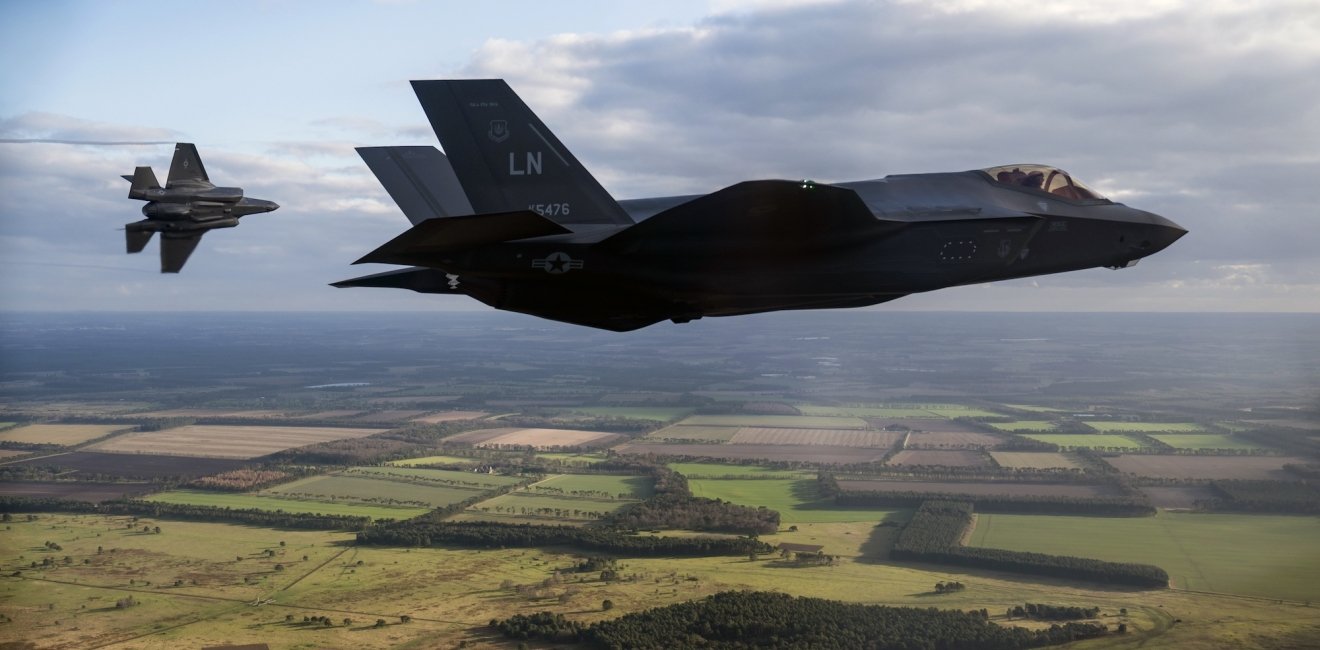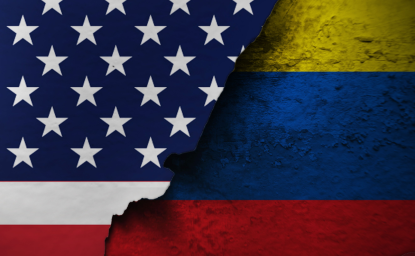Much to the anxiety of policymakers in Washington, the two most important Arab partners in the Persian Gulf to the United States are asserting a studied neutrality in the emerging Cold War with Russia and China. Both Saudi Arabia and the United Arab Emirates (UAE) are fast expanding their relations with China while declaring their non-alignment in the new feuds over Ukraine and Taiwan. The question is—at what benefit, and what cost?
This past December, Saudi Arabia signed a Comprehensive Strategic Partnership Agreement with China (the UAE and China signed a similar partnership accord in 2018). Saudi Crown Prince Mohammed bin Salman (MBS) warmly welcomed President Xi Jinping to Riyadh for the signing of what the Chinese called an “epoch-making milestone in the history of China-Arab relations.” The UAE became the first Gulf Arab nation to purchase Chinese military aircraft, including trainer jets in likely preparation for flying China’s most advanced warplanes, the FC-31 stealth fighter.
OPEC has cut production by 3.6 million barrels a day over the past six months, led by Saudi Arabia in close collaboration with Russia.
The two Gulf Arab monarchies have paid scant attention to US calls for economic sanctions on Russia following its invasion of Ukraine. Nor have they abided President Biden’s pleas to make up for the loss of Russian oil in order to lower gasoline prices for American consumers. To the contrary, the Organization of Petroleum Exporting Countries (OPEC) has cut production by 3.6 million barrels a day over the past six months, led by Saudi Arabia in close collaboration with Russia.
Leaning toward China
The question arises whether these Arab monarchies can afford a policy of non-alignment with a tilt toward China in face of pressure from Washington to stay in its corner. Their security still depends heavily on the US and the vast bulk of their arms remain “Made in America.” China has scant military presence in the Gulf and has so far offered no security assurances of any kind.
On the other hand, neither has the United States ever committed itself in writing to the “ironclad” guarantee of “a swift, overwhelming and decisive response” that President Biden pledged to South Korea in April in case of a nuclear attack from North Korea. The current administration, like those before it, has limited itself to myriad verbal reassurances of US aid to help the Gulf Arab monarchies help themselves. The only commitment Biden has made to Gulf Arab states’ security is to never allow Iran to acquire a nuclear bomb. Still, decades of efforts to convince the Gulf Cooperation Council (GCC) to form a US-backed common air defense system against Iran have failed.
There is a long history to end Saudi Arabia’s lopsided dependence on the US and to cultivate its relationship with China in particular as a counterbalance. In 2004, the former Saudi foreign minister, Prince Saud al-Faisal, explained to me, only half-jokingly, the Saudi vision of nonalignment in these terms: Saudi Arabia was not tied to the US in an unbreakable “Catholic marriage.” It was, he reminded me, a Muslim country with the right to have up to four wives at once, so long as it treated them all equally.
At the time, Saudi Arabia had long since reached out to China to court a “second wife.” In 1985, then Saudi ambassador to Washington, Prince Bandar bin Sultan, outraged the Reagan administration by traveling incognito to Beijing to open negotiations on the purchase of Chinese medium-range ballistic missiles, the East Wind CSS-2, capable of carrying nuclear warheads. Saudi Arabia did not yet have diplomatic relations with the Communist country at the time. The Saudis even managed to smuggle the missiles into the kingdom without the knowledge of the US government. The CIA only discovered the Saudi deceit in early 1988, touching off a full-scale crisis in US-Saudi relations and nearly triggering Israeli military retaliation.
Today, China is Saudi Arabia’s number one trading partner and customer of its oil exports. Russia... cooperates closely with the Kingdom to maintain high oil prices at US expense.
Ironically, Saudi Arabia finally established diplomatic relations with China just before the outbreak of the 1990-91 Gulf War when the US dispatched 500,000 soldiers to defend the Kingdom against Iraq and liberate Kuwait from its occupying troops. Although, it waited until 1992 after the collapse of the Soviet Union—and demise of communism—to reactivate its long-frozen ties with Moscow. Today, China is Saudi Arabia’s number one trading partner and customer of its oil exports. Russia, the world’s biggest non-OPEC exporter, cooperates closely with the Kingdom to maintain high oil prices at US expense.
Leaky security
Neither China nor Russia looms as a security threat to the Gulf Arab states who are instead concerned with Iran, particularly Saudi Arabia, which views Tehran as its main rival for Gulf primacy. In the face of Iranian expansion and aggression in the Gulf and beyond, the US security umbrella has proven increasingly leaky.
There was no US response when an Iranian drone and missile barrage on Saudi oil facilities knocked out half of the kingdom’s oil production in September 2019. Then US president Donald Trump, declared he was in “no rush” to go to war with Iran and observed, to the consternation of the Saudis, “that was an attack on Saudi Arabia. That wasn’t an attack on us.” Nor did the Biden administration react when Iranian-backed rebels in Yemen carried out several drone and missile attacks on the UAE in January 2022. In both cases, the US response was limited to sending Patriot missiles to bolster their defenses against future incidents.
The six Gulf Arab monarchies, though grouped together in the GCC, have no common defense strategy or military relationship with the US. Only three of them—Kuwait, Bahrain, and Qatar—rank as a Major Non-NATO Ally. And only four—Kuwait, Oman, Bahrain, and the UAE—have defense cooperation agreements with Washington mainly to facilitate US arms sales and military training. Although, Qatar does hosts US Central Command’s regional headquarters and Bahrain the US Fifth Fleet.
[Saudi Arabia] has never wanted a permanent American military presence in the Kingdom... and has not even asked for a formal defense cooperation agreement.
The outlier is Saudi Arabia, the GCC’s military keystone and America’s oldest Middle East partner dating back to 1945. It has never wanted a permanent American military presence in the Kingdom, nor to become a Major Non-NATO ally, and has not even asked for a formal defense cooperation agreement. It has also always looked askance at US efforts to form a collective compact with its Gulf Arab partners, such as when former President Trump unsuccessfully sought to launch a Middle East Strategic Alliance.
Nonetheless, the Saudi military is armed to the teeth with tens of billions of dollars of US arms and hopes to buy the most sophisticated US warplane, the F-35. It has reportedly, for the first time, sought a written US security guarantee against future Iranian attacks. This comes amid complex negotiations over a deal with the Biden administration to establish diplomatic relations with Israel.
Skewed alignment
The obstacles to adopting a nonaligned posture with a tilt toward China have become painfully apparent in the Biden administration’s two-year-long negotiations with the UAE over its purchase of the F-35 fighter jet. The UAE is arguably America’s closest GCC military partner; it was the only one to send soldiers and warplanes to fight alongside American forces in Afghanistan. Still, the F-35 talks remain inconclusive because of US security concerns over the UAE’s expanding military ties with China. These include, according to US officials, an indication the UAE is allowing China to build a naval base there.
At some point soon, Saudi Arabia and the UAE will have to decide whether to live with a leaky security arrangement led by the US or take their chances with China or Russia. Buying Chinese or Russian arms is certain to incite Washington’s wrath and make purchase of advanced American weaponry ever more problematic. But it remains very unlikely Chinese or Russian arms will resolve Saudi’s security dilemma.
China also has extensive economic interests and a comprehensive strategic agreement with Iran and, so far, has stuck its own strict nonalignment policy in the Iran-Saudi rivalry. Russia, on the other hand, has become closer to Iran militarily, selling its advanced SU-35 fighter jet to Tehran and buying Iranian drones for its war in Ukraine in return. The US security umbrella may be leaky but neither China nor Russia seem likely to offer even that.
The views expressed in these articles are those of the author and do not reflect an official position of the Wilson Center.






